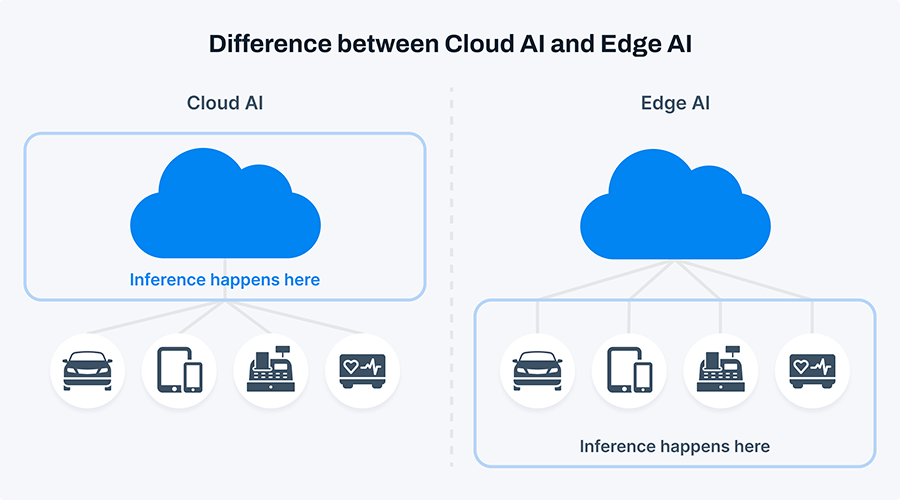As artificial intelligence (AI) continues to revolutionize industries across the globe, a crucial debate has emerged in the tech and investment world: Edge AI vs Cloud AI. These two approaches define how and where AI data processing happens—on local devices or centralized cloud servers—and each comes with its own opportunities, challenges, and potential for growth. For investors, understanding the nuances between the two is essential to spot the next wave of innovation.
Understanding the Basics
Cloud AI refers to artificial intelligence that operates in the cloud. Large-scale models, vast datasets, and heavy computational requirements are handled in remote data centers. This model allows centralized training, management, and updates—ideal for applications like AI chatbots, fraud detection, and deep learning tasks.
Edge AI, on the other hand, brings intelligence to the device itself—such as smartphones, sensors, drones, and IoT devices. Data is processed locally, in real-time, without needing constant internet connectivity. It enables use cases like autonomous vehicles, smart security systems, and industrial automation.
The Edge AI Advantage
The rise of Edge AI is largely due to the need for real-time processing, low latency, and enhanced data privacy. For example, in autonomous vehicles, a millisecond delay can be dangerous. Edge AI enables quicker decisions without relying on remote servers. Furthermore, industries like healthcare and defense prefer on-device processing to avoid sending sensitive data over the internet.
Key sectors betting big on Edge AI include:
-
Smart manufacturing
-
Healthcare wearables
-
Surveillance and security
-
Energy and utilities
-
Automotive
Investors are watching companies like NVIDIA, Qualcomm, and Arm Holdings, all of which are leading the charge in Edge AI chips and architectures.
Why Cloud AI Still Dominates
Despite the momentum behind Edge AI, Cloud AI remains the backbone of enterprise AI. Training massive language models, running predictive analytics, and storing petabytes of data are still tasks best suited for the cloud.
Cloud providers like Amazon Web Services (AWS), Google Cloud AI, and Microsoft Azure offer scalable, subscription-based services to businesses of all sizes. Cloud AI is also more cost-effective when devices lack the necessary computing power.
For investors, cloud AI offers exposure to mature platforms with consistent revenue streams, strong client bases, and global infrastructure.
Investment Outlook: Edge or Cloud?
The debate isn’t about choosing one over the other—it’s about understanding where the next wave of growth lies. Analysts project the Edge AI market to grow at a CAGR of over 20% in the coming years, driven by the explosion of IoT devices and smart infrastructure.
However, Cloud AI’s dominance in training and enterprise services ensures it remains a strong long-term play.
Hybrid is the Future
Many experts believe the future isn’t binary—it’s hybrid. Companies will increasingly use cloud for training models and edge for real-time decision-making. For example, a smart city system might use cloud AI to analyze traffic trends while edge AI operates traffic lights in real time.
Final Thoughts
For investors, the smartest move might not be choosing sides, but diversifying across both. Edge AI represents agility, speed, and new-age applications, while Cloud AI offers scale, power, and reliability.
As the AI ecosystem matures, the biggest winners will be those who can bridge the gap—offering integrated, scalable, and secure AI solutions across both platforms. Watch this space closely; the next AI unicorn could come from either side of the edge.










